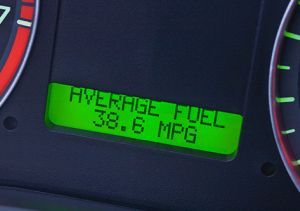AAA engineers conducted a comprehensive analysis of 37,000 records submitted to the EPA, representing over 8,400 vehicle make, model and year combinations, to identify trends in real-world fuel economy. Surprisingly, among the self-reported data, eight out of 10 drivers reported fuel economy that was higher than the combined city and highway EPA mileage rating for their vehicle. Additional findings include:
- Owners of vehicles equipped with manual transmissions reported 17 percent higher fuel economy than EPA ratings.
- Owners of diesel-fuel vehicles, including light trucks, reported 20 percent higher fuel economy than EPA ratings.
- Truck owners with gasoline-fuel V-8 engines reported fuel economy five percent higher than EPA ratings, while owners of turbocharged V-6 engines reported fuel economy that was nine percent lower.
- Owners of sedans with V-6 engines reported a nine percent higher fuel economy than EPA ratings, while owners of turbocharged four cylinder engines reported fuel economy that was four percent lower.
- Minivan owners reported real-world fuel economy that was equal to or slightly lower than EPA ratings.
“The vast majority of drivers that submit their vehicle’s fuel economy to the EPA report mileage that beats the window sticker rating,” continued Nielsen. “Although self-reported data has limitations, it’s encouraging to see real-world fuel economy that more closely aligns with, or even exceeds, automaker promises.”
In conducting this analysis, AAA engineers identified a list of vehicles that were frequently reported as failing to achieve the EPA’s mileage rating. The majority of these vehicles, including the scrutinized Hyundai and Kia models, have since been retested and, in some cases, mileage ratings were revised. AAA selected three additional vehicles – a 2014 full-size pickup truck, a 2014 large sedan and a 2012 medium sedan – for further testing.
In partnership with the Automobile Club of Southern California’s Automotive Research Center, AAA tested the vehicles independently to verify the fuel economy. Over the course of several weeks, testing was conducted using a certified dynamometer and on the streets of Southern California. Test results from of all three vehicles confirmed the EPA mileage rating was accurate, leaving AAA to conclude that driving behaviors, vehicle condition, driving environment and terrain are likely responsible for most deviations from EPA ratings that consumers experience.
“In addition to logging hundreds of miles in various driving environments, the research team put the vehicles through EPA-specified testing designed to mimic the real-world conditions, including city, highway and aggressive driving,” said Megan McKernan, manager of the Automobile Club of Southern California’s Automotive Research Center. “The findings indicate that while vehicles tested are capable of achieving the EPA rating, a driver’s real-world mileage will vary based on driving style.”
In the next phase of AAA’s fuel economy testing series, to be released in late 2015, researchers will measure the impact that specific driving behaviors, such as acceleration rates and idle time, have on an individual driver’s fuel economy. In the meantime, AAA recommends that drivers take a closer look at their driving habits to understand the role they play in the fuel efficiency of their vehicle.
“If you drive aggressively, with heavy acceleration, hard braking and driving at higher speeds, your fuel economy is going to suffer,” continued Nielsen. “Driving just five miles-per-hour above 50 is like paying an additional 19 cents per gallon for gasoline.”






 ORLANDO, Fla. (June 17, 2015) – A new AAA survey reveals that one-in-three Americans do not believe the U.S. Environmental Protection Agency’s (EPA) new vehicle window sticker accurately reflects the fuel economy they achieve when driving. To assess the accuracy of this perception, AAA performed an analysis of data collected on the EPA’s FuelEconomy.gov website, along with laboratory and real-world vehicle testing, and found that driver behaviors and environmental conditions, rather than vehicle shortcomings, are likely responsible for most fuel economy variances.
ORLANDO, Fla. (June 17, 2015) – A new AAA survey reveals that one-in-three Americans do not believe the U.S. Environmental Protection Agency’s (EPA) new vehicle window sticker accurately reflects the fuel economy they achieve when driving. To assess the accuracy of this perception, AAA performed an analysis of data collected on the EPA’s FuelEconomy.gov website, along with laboratory and real-world vehicle testing, and found that driver behaviors and environmental conditions, rather than vehicle shortcomings, are likely responsible for most fuel economy variances.

















